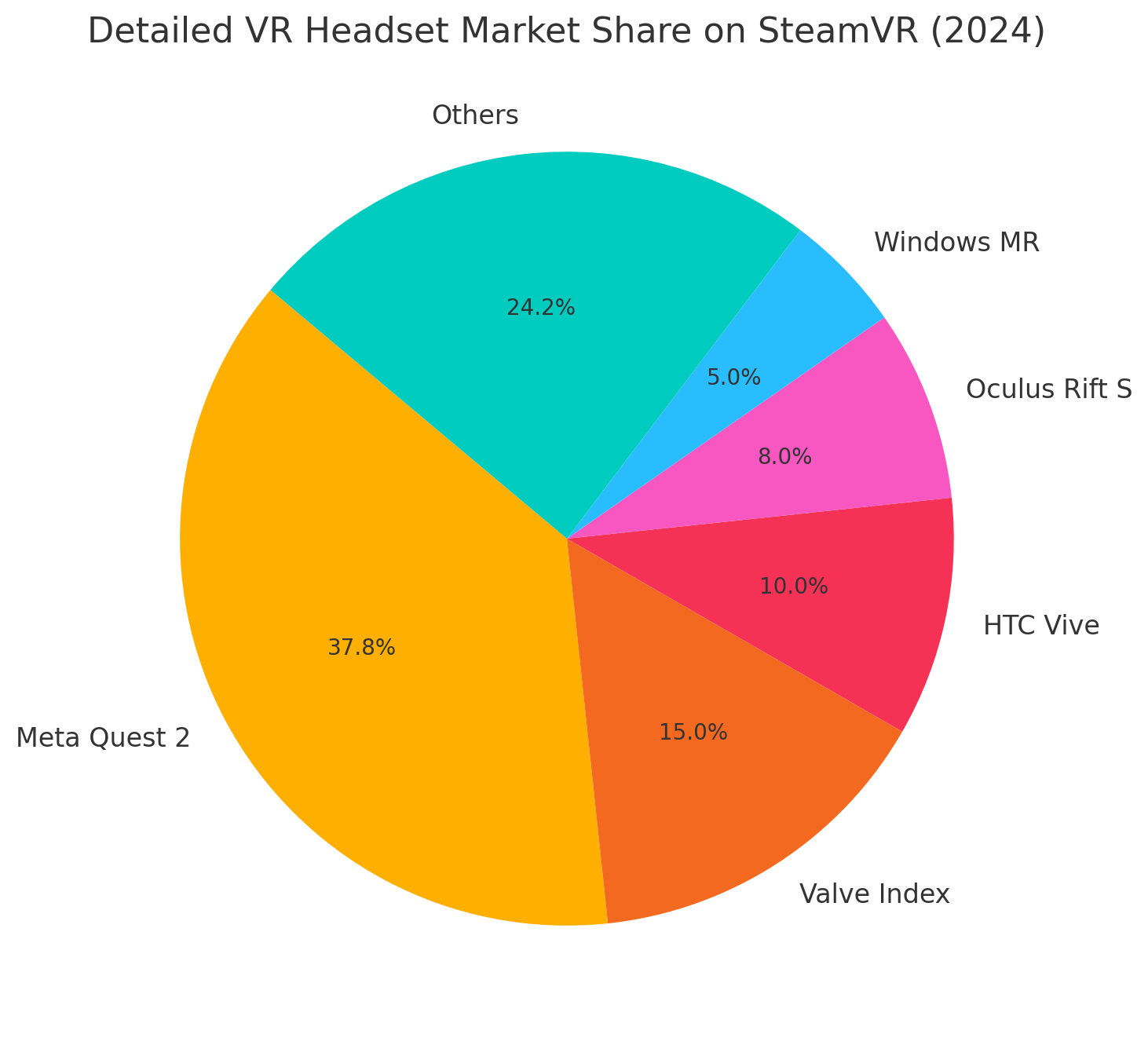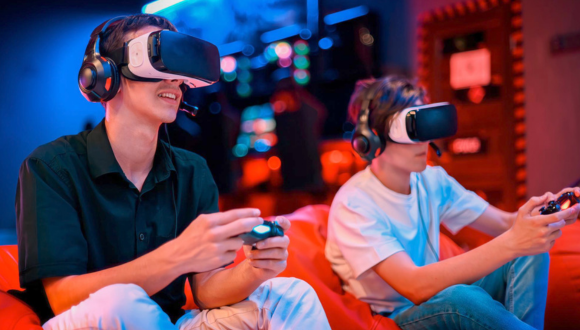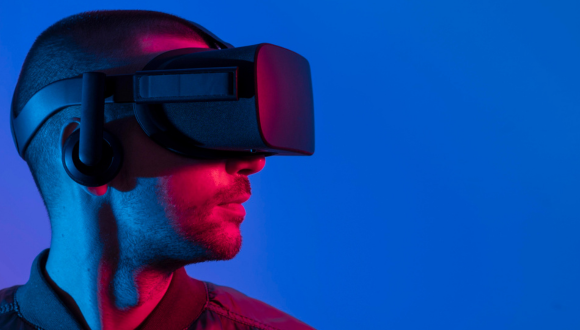

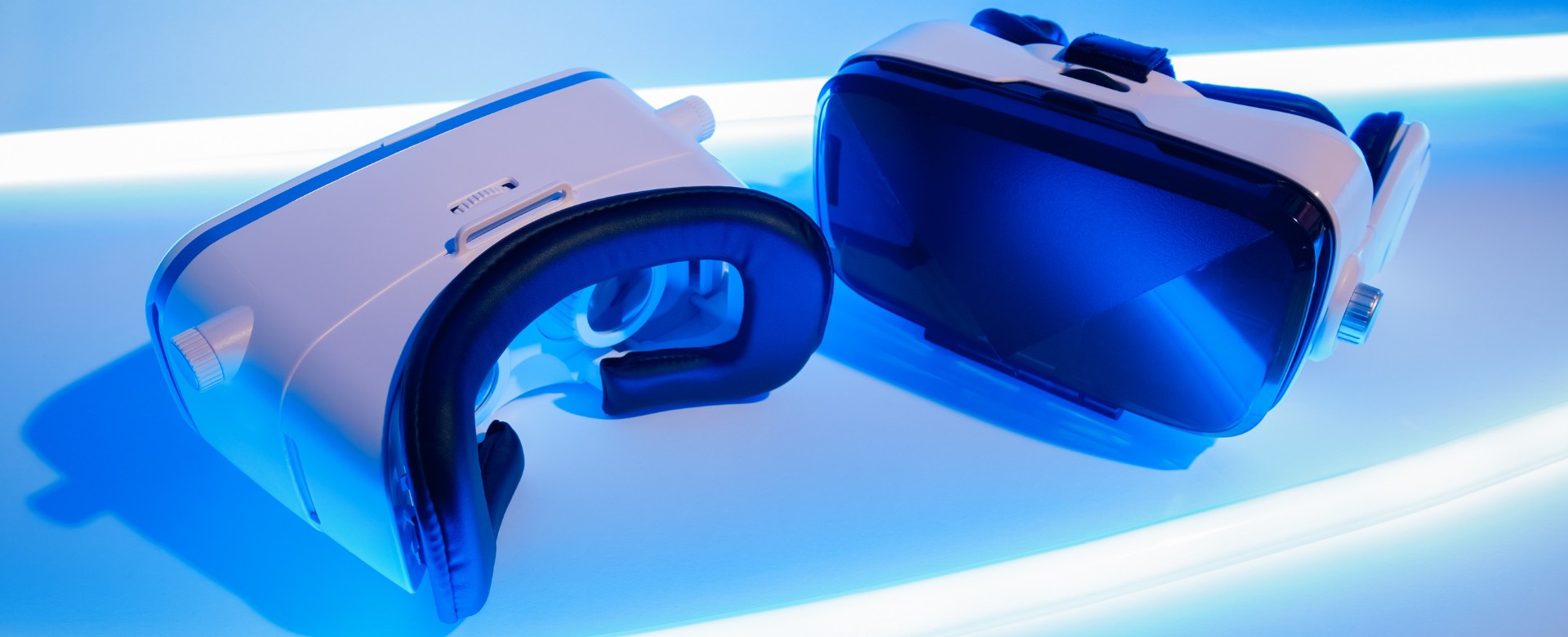
Regional VR Distribution
Globally, virtual reality gaming has a growing user base. As of 2023, an estimated 171 million people worldwide use VR in some form. This number is projected to reach roughly 216 million VR users by 2025, reflecting the technology’s rapid growth. North America alone contributes a large portion – in the United States, there were 65.9 million VR users in 2023 (about 15% of the U.S. population).
By comparison, Europe and Asia each account for tens of millions of VR users (details below), and Latin America’s VR user base, while smaller, is expanding quickly. Importantly, not all VR owners are active gamers. Industry reports reveal a significant gap between total units sold and active usage.
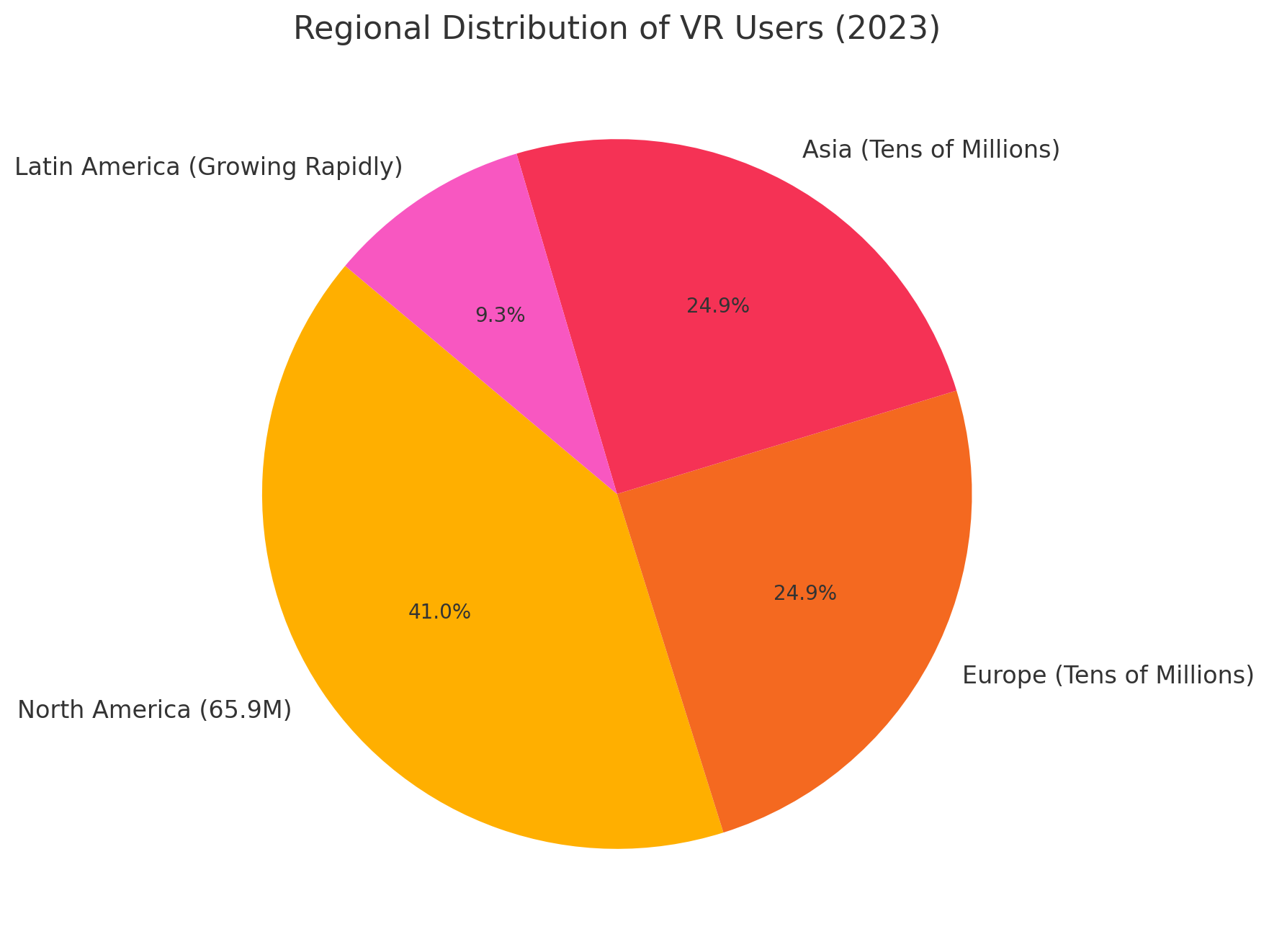
For example, Meta’s internal data (leaked in 2023) showed nearly 20 million Quest headsets sold to date, yet only about 6.37 million of those were being used on a monthly basis. In other words, fewer than one in three Quest 2 owners use their device each month. This indicates that many users try VR but do not remain actively engaged, a trend seen across platforms.
On PC as well, the active VR user base is a subset of total gamers – as of early 2024 about 1.82% of Steam users had a VR headset attached, which corresponds to roughly 2–3 million monthly active VR players on Steam given Steam’s huge user base. These figures underline the difference between total VR device owners vs. active VR gamers, a key factor in assessing popularity.
Platform Breakdown: Meta Quest, Oculus, PSVR2, and SteamVR
VR gaming is spread across several major platforms. Each platform’s user counts and popularity vary by region.
Meta Quest (Oculus Quest series)
Standalone VR: The Quest lineup (Quest 1, 2, 3, and Quest Pro) leads the market in unit sales and user base.
Meta has sold nearly 20 million Quest headsets as of early 2023 – a milestone far above any other single VR device. This gives Meta’s headsets an estimated 90% share of the VR headset market in 2023.
The Quest 2 remains the most popular headset globally, and it even accounts for the largest share of PC VR usage on Steam (more on that below). However, active usage is lower than sales: only about one-third of Quest 2 owners use their headset monthly.
Meta has noted retention as a challenge, emphasizing the need for more compelling content and social features to keep players engaged. On the positive side, Quest users have collectively spent over $1.5 billion on Quest Store games and apps (as of 2023), indicating a substantial active community. Quest devices are popular in North America and Europe, and also present in parts of Asia (though Meta’s official presence in China is limited).
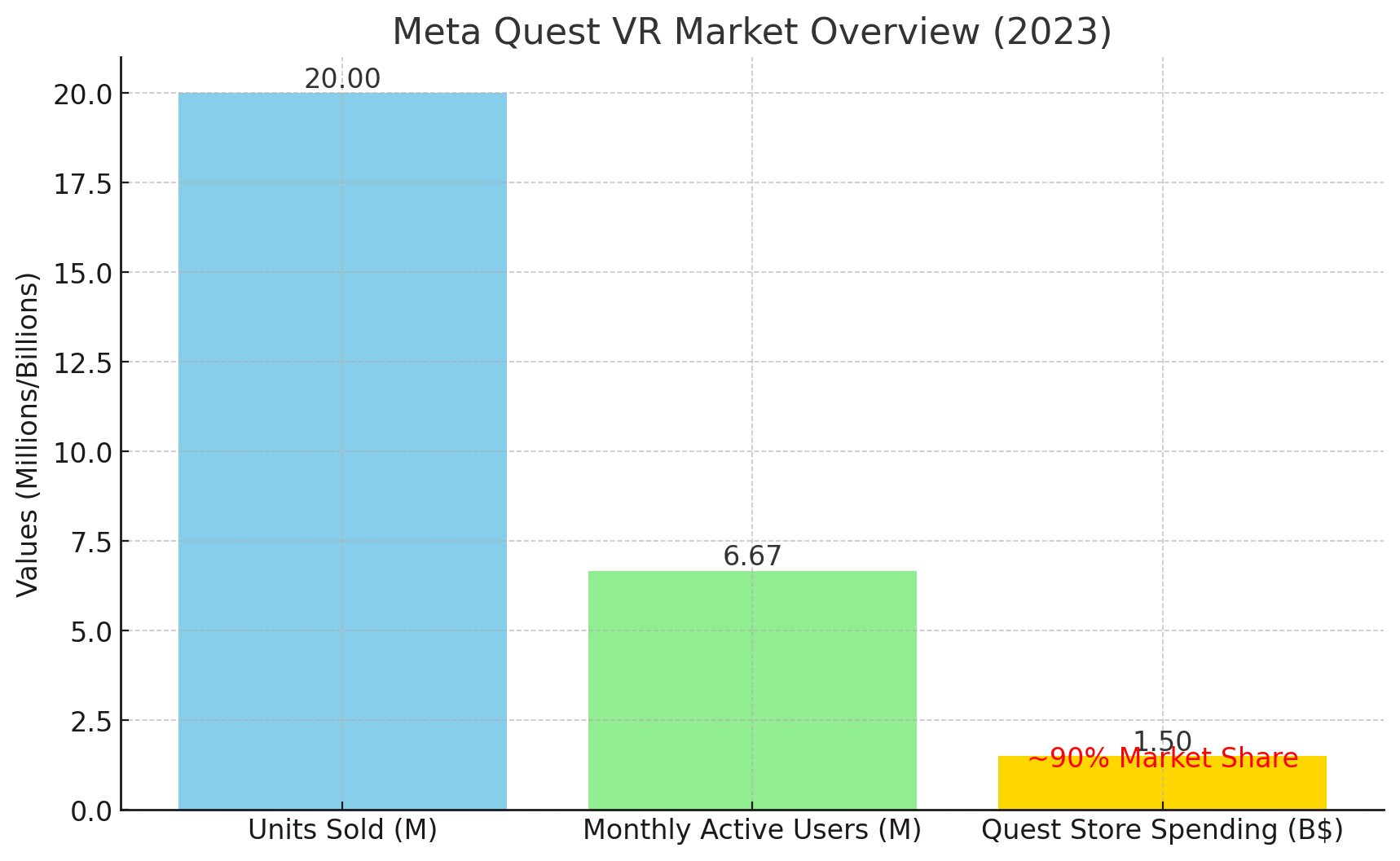
PlayStation VR2 (PSVR2)
Console VR: Sony’s PSVR2, launched in 2023 for the PlayStation 5, has a smaller but notable user base. By late 2023, industry analysts estimated around 2 million PSVR2 units sold. (For context, this is on pace with or slightly behind the original PSVR’s adoption).
PSVR2’s user base is concentrated in PlayStation’s strongest markets: North America and Europe (where most PS5 consoles are) and Japan in Asia. In terms of game popularity, PSVR2 users have shown strong engagement with top titles – for instance, Beat Saber consistently topped the PSVR2 download charts in both Europe and North America in 2023.
However, compared to standalone and PC VR, PSVR2’s overall share of the VR gaming market remains relatively small due to its limited platform (PS5 only) and the high cost of entry. Sony has not released official active user figures, but given the dedicated nature of console gamers, many PSVR2 owners are likely active, even if the total pool is smaller.
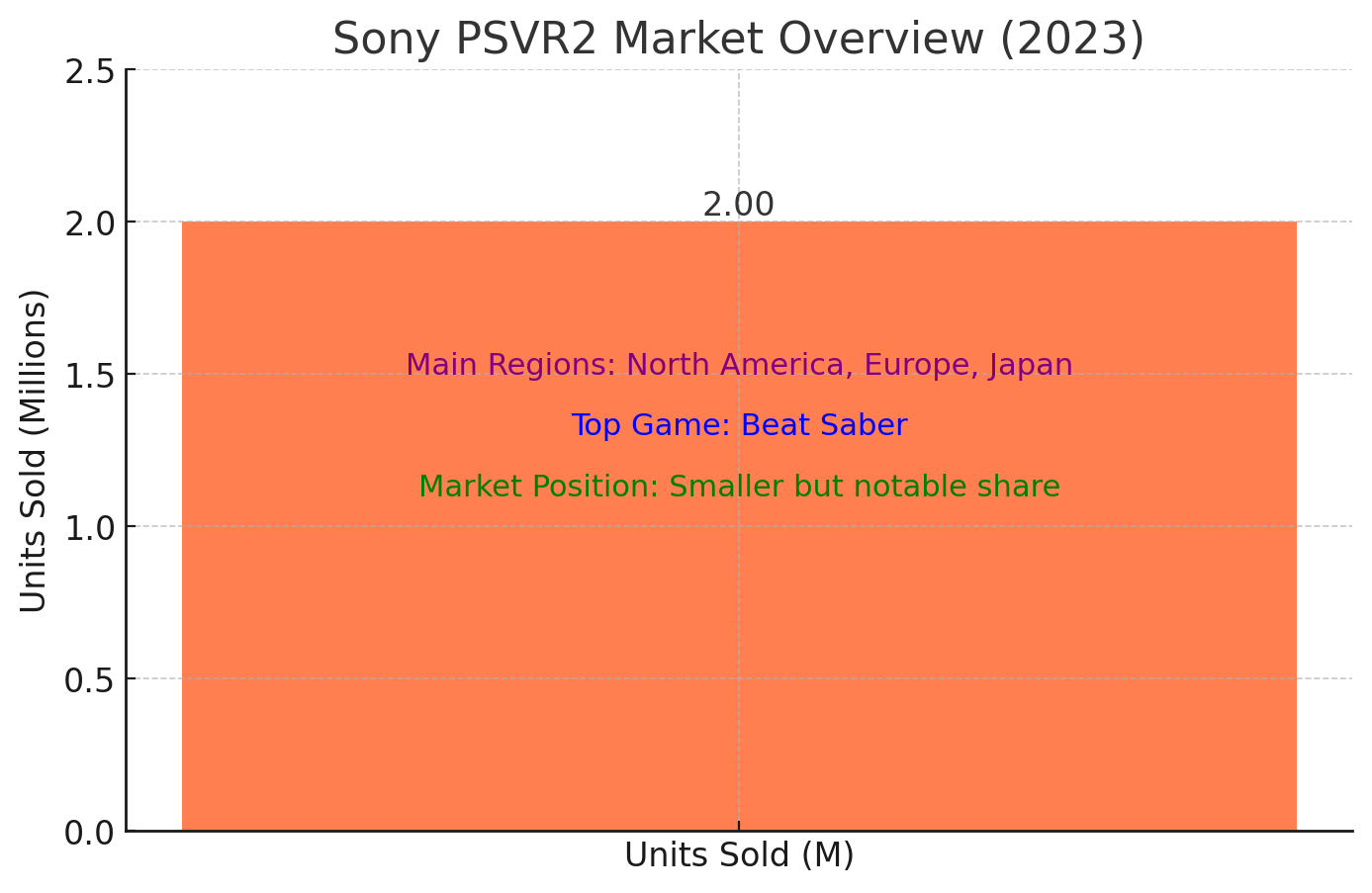
PC VR – SteamVR and Oculus (Rift)
Tethered PC-based VR: PC VR gaming caters to enthusiasts using a variety of headsets (Valve Index, HTC Vive, Oculus Rift/Rift S, Windows MR, and Quest or other standalone headsets tethered to PC).
The SteamVR platform is the primary hub for PC VR gamers. As noted, about 2% of Steam’s users use VR hardware (1.8% in Mar 2024), translating to a few million active PC VR players globally at any time. On Steam, the Quest 2 is actually the most used VR headset (when connected to a PC) – it held ~37.8% of the SteamVR user share in recent hardware surveys. Other popular PC headsets include the Valve Index, Oculus Rift S, HTC Vive, and Windows Mixed Reality devices, each with smaller percentages. (Notably, the old Oculus Rift line has been retired; many former Rift users have migrated to Quest 2 via Link or to other devices.)
SteamVR’s user base is strongest in North America and Europe (which have large PC gaming communities), with a smaller contingent in Asia-Pacific. It’s common for VR enthusiasts to own a standalone headset like Quest 2 that they use both independently and with Steam for high-end games.
While exact active counts fluctuate, Steam’s concurrent VR user counts tend to spike with major game releases or events but remain a niche fraction of overall Steam gamers. Still, the PC VR ecosystem offers some of the most immersive and high-fidelity VR game experiences, sustaining a dedicated user group.
